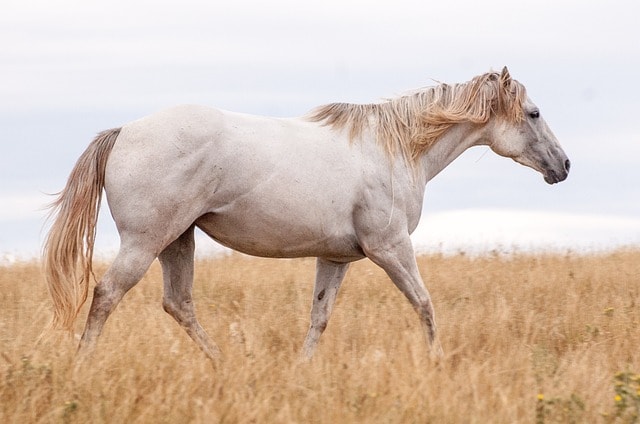Horses in heat - What you should know
The equine estrus is a crucial part of the mare's reproductive cycle and plays an essential role for horse owners, especially in breeding. A mare in estrus displays characteristic signs that indicate her readiness to mate. Understanding this natural process, which is controlled by hormones, is crucial to determining the ideal time for insemination.
In this blog post, we go into detail about the estrus, the cycle and the behavior of the mares and offer valuable tips for you to optimally accompany your mare through this phase.
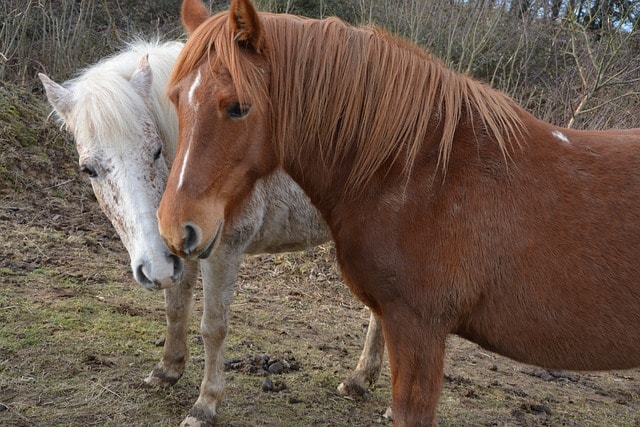
What is estrus in horses?
Heat, also known as estrus, is the phase in the mare's reproductive cycle when she is fertile and ready to mate. A mare in heat will show clear behavioral changes that mark her as receptive to stallions. This phase typically lasts 5 to 7 days and occurs every 19 to 24 days. During this time, mares undergo hormonal changes that are aggravated by the influence of light and temperature. The mare's cycle is highly dependent on the season, as longer daylight hours in spring and summer encourage heat, while winter sees a period of rest (anoestrus).
The Mare's Reproductive Cycle
The mare's reproductive cycle is a complex, hormonally controlled process that is divided into four main phases. Each of these phases plays a crucial role in preparing the mare for reproduction and possible pregnancy. The cycle is seasonal and is strongly influenced by external factors such as daylight and temperature. The mare's cycle becomes more active, especially in spring and summer, when the duration of daylight increases, while a resting phase occurs in winter.
1st estrus (heat)
Estrus, also known as heat, is the fertile phase of the cycle when the mare is ready to mate. This phase lasts about 5 to 7 days and is characterized by clear behavioral changes that indicate readiness to mate. During estrus, the follicles in the ovaries mature. The rising hormone estrogen causes the characteristic symptoms such as frequent urination, tail lifting and an increased interest in stallions. A mare in heat often also displays "waving" of the vulva, another sure sign of readiness to mate. At the end, usually on the 4th or 5th day, ovulation occurs, when the egg is released from the follicle and can be fertilized.
2nd metestrus
Metestrus occurs directly after ovulation and lasts about 2 to 3 days. During this phase, the corpus luteum forms from the remaining follicular tissue. The corpus luteum produces the hormone progesterone, which is responsible for maintaining a possible pregnancy. Progesterone prepares the uterus for the implantation of a fertilized egg and ensures that the mare is no longer in heat during this phase. During metestrus, the mare no longer shows any interest in stallions and her fertility decreases.
3. Diestrus
Diestrus is the longest part of the cycle and lasts about 14 days. During this time, the mare is not receptive to stallions and shows no signs. The corpus luteum remains active and continues to produce progesterone to support a possible pregnancy. However, if the egg has not been fertilized, the corpus luteum is broken down towards the end of this phase and progesterone levels drop. This drop in hormones initiates the next estrus and the cycle begins again.
4. Anestrus
Anestrus is the period of sexual inactivity and occurs in the winter months when daylight hours decrease. During this time, the mare's hormone levels are very low and she does not show any signs. Anestrus is a sort of "resting phase" for the mare's reproductive organs, as the cycle is not active during this time. Mares go through what is known as "light dependency" in winter, which means that prolonged periods of darkness suppress hormone production, thus pausing reproductive readiness.
Signs of a Mare in Heat
There are several physical and behavioral signs that indicate a mare is in heat. You should watch these signs closely to avoid missing the best time for insemination. The most common symptoms include:
-
Frequent urination : A mare in heat urinates more frequently, especially near stallions. This serves as a signal of her readiness to mate.
-
Behavior towards stallions : The mare shows an increased interest in stallions, seeks their proximity and is noticeably more open.
-
Waving vulva : One of the surest signs is the so-called "waving" of the vulva, in which it opens and closes rapidly.
-
Tail lifting : The mare frequently lifts her tail and places it to the side to make it easier for the stallion to access.
The behavior of the mare during estrus varies from individual to individual. Some mares become restless or even aggressive during this time, while others simply show increased interest in stallions. You should closely observe your mare's behavioral changes to determine when she is fertile.
Insemination: The ideal time
For horse owners and breeders, the timing of insemination is crucial to ensure a successful pregnancy. Ovulation occurs towards the end of estrus, usually on the fourth or fifth day. Since the stallion's sperm can survive in the mare's reproductive tract for several days, it is recommended that the mare be covered or artificially inseminated approximately 24 to 48 hours before ovulation.
In artificial insemination, it is particularly important to determine the exact time of ovulation, as frozen sperm has a limited lifespan (12 to 24 hours). To determine the ideal time, veterinary examinations, such as ultrasound, can be used to monitor the growth of follicles.
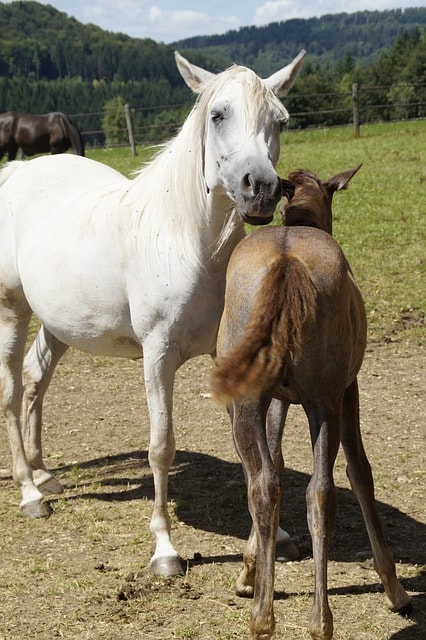
Hormonal Control of Estrus in Horses
The estrus is controlled by a complex hormonal process in which the hormones estrogen and progesterone play a central role. These hormones influence the mare's entire cycle and also determine the characteristic behavior during estrus. When estrogen levels rise during estrus, the mare shows typical behavior such as increased interest in stallions and increased urination.
In some cases, hormonal disorders can have a negative impact on the mare. When these disorders occur, estrus may become irregular or stop altogether. Such hormonal imbalances should be examined by a veterinarian to find the cause and begin appropriate treatment.
A stable balance of hormones is essential for the cycle to run normally and for the mare to show healthy reproductive signals.
Problems during estrus: continuous estrus and cycle disorders in your horse
Some mares suffer from what is known as a prolonged heat, where the heat lasts longer than 10 days. This can be caused by hormonal imbalances in which the follicles in the ovaries are not broken down properly. A prolonged heat can lead to restlessness and irritability in the mare and should be examined by a veterinarian.
Typical symptoms of a persistent heat are:
-
Persistent urination
-
Persistent irritability
-
Increased interest in stallions
Regular veterinary monitoring of the cycle is essential to detect and treat such disorders at an early stage.
Winter heat: The influence of the seasons on your horse
The mare's cycle is highly dependent on the seasons. During the winter months, when the days become shorter, the so-called hibernation (anestrus) occurs. During this time, the mares either do not oestrus at all or only oestrus very irregularly. This phase usually lasts from September to March. As the days become longer in spring, the cycle begins again and the mares come into oestrus more regularly.
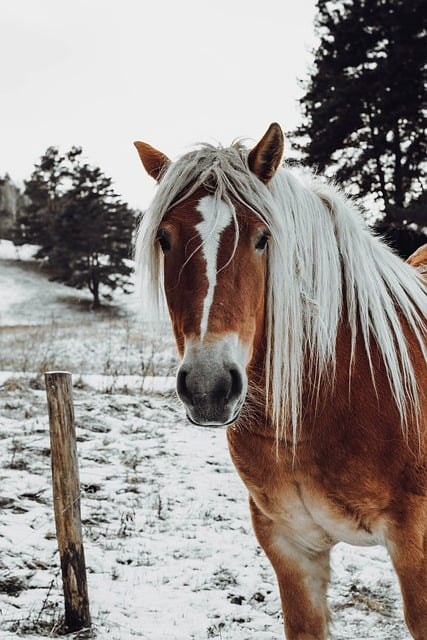
Supporting the mare during estrus
Many mares cope well with the hormonal fluctuations during estrus. However, some mares may experience symptoms that require additional support. There are several things you can do to support your mare during this time:
-
Nutrition : An adapted diet can help to regulate hormonal fluctuations. Certain herbs such as chasteberry and yarrow are known to stabilize the mare's hormone balance and relieve cramps.
-
Stress reduction : A calm environment and regular exercise will help the mare to get through the heat more relaxed. You should be careful not to expose your mares to unnecessary stress, as this can affect the cycle.
-
Veterinary attention : If your horse has severe symptoms or irregular cycles, you should consult a veterinarian to rule out hormonal disorders or other health problems.
Herbs to support mares in heat
Various natural herbs can help to stabilize the hormone balance and improve the mare's well-being during estrus. The most popular herbs include:
-
Chasteberry (Vitex agnus-castus) : This herb is known for its hormonal regulating effect and can help with behavioral problems during estrus.

-
Lady's mantle (Alchemilla vulgaris) : Lady's mantle supports fertility and can have an antispasmodic effect, which relieves the discomfort during estrus.
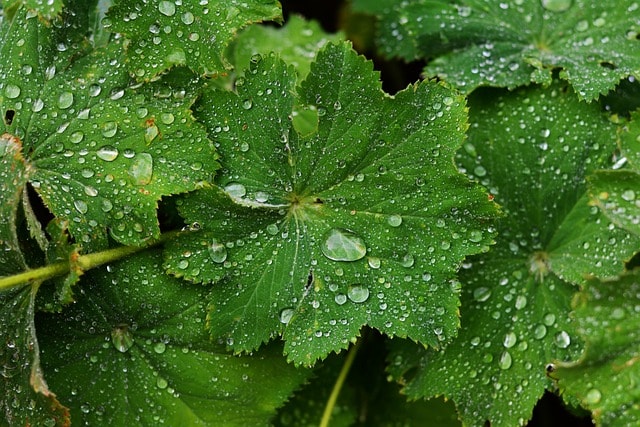
-
Yarrow (Achillea millefolium) : Yarrow has a calming effect and is often used to relieve cramps.
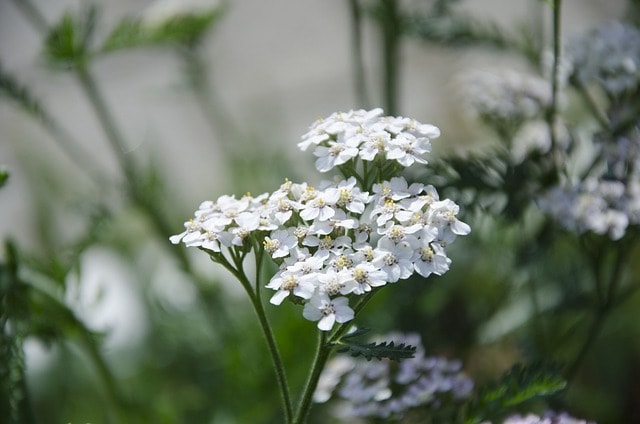
Conclusion on estrus in horses
The estrus in mares is a complex, hormonally controlled process that is crucial for reproductive success. A deep understanding of this natural cycle is of great importance not only for breeders, but also for horse owners, as they can better interpret the behavior of their animals and respond optimally to the needs of their estrus mares.
The physical and behavioral signs that a mare in heat shows range from frequent urination and tail lifting to an increased interest in stallions. You should pay attention to these signs so that you don't miss the ideal time for insemination, as ovulation usually occurs towards the end of the heat.
A thorough understanding of the reproductive cycle and the hormonal influences on mares in heat helps to identify problems such as prolonged heat or cycle disorders at an early stage. It is essential to stabilize the hormone balance, for example through targeted nutrition, stress-free management or the use of herbs such as chasteberry and yarrow, which can promote the well-being of the mares during heat.
Timing is crucial in artificial insemination. Therefore, mares in heat should be monitored regularly to determine the optimal time for successful insemination. If you study the heat and the behavior of your animals intensively, you can not only improve the fertility of your mares, but also increase their general well-being during this time.
In summary, estrus is an unavoidable but manageable part of a mare's life. Through careful observation, individual care and knowledge of the cycle and behavior of a mare in estrus, you can optimally support the health and fertility of your mare and achieve long-term successful breeding results.
